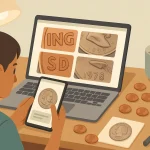Historical Development of Currency Systems
From Bartering to Coins: The Birth of a New Era
Imagine a world where your morning coffee is traded for a handful of eggs. That was life in the days of bartering—a system both practical and chaotic. But as societies expanded, bartering turned into a logistical nightmare. Enter currency: humanity’s brilliant shortcut. Ancient cultures began experimenting with materials to represent value—shells, stones, even slabs of salt. But it was the advent of coins, crafted from durable and precious metals like gold and silver, that revolutionized trade forever.
The concept? Simple yet genius: small, easily portable tokens of standardized value. In ancient Lydia (modern-day Turkey), the world’s first coins, made of an alloy called electrum, emerged around 600 BCE. These were the prototypes for the shimmering coins we carry today. Could they have ever imagined how far their invention would ripple across history?
Ancient Coinage: A Leap Towards Stability
When coins entered the stage, they didn’t just facilitate trade; they shaped societies. Ancient rulers quickly realized the potential of stamping their authority on these shiny objects. Coins bore portraits of emperors, symbols of power, and even gods. This wasn’t just branding—it was propaganda in your pocket. With coins:
- Trade grew reliable, no more haggling over questionable goat quality.
- Kingdoms could tax consistently. (Thanks for that, ancient accountants.)
- Societies bridged cultural gaps with universal economic tools.
Today, while we use sleek credit cards or cryptocurrency, we’re still walking a path laid by those early pioneers. Coins—they’re not just metal; they’re history you can hold.
Key Features of Ancient Coins and Their Legacy
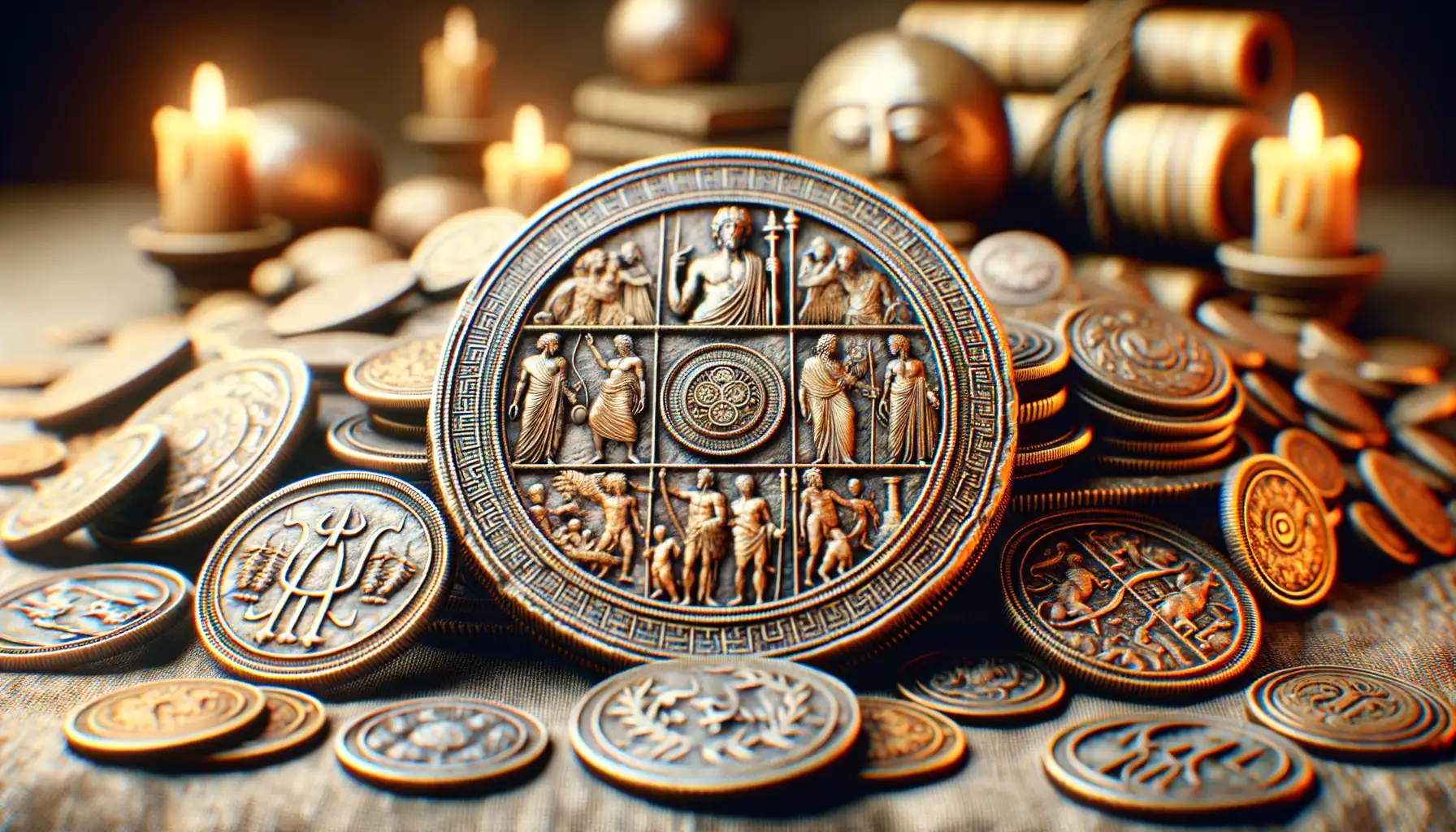
Timeless Craftsmanship and Unique Details
Coins from ancient civilizations are not just relics; they’re miniature works of art, whispering stories of empires, trade routes, and conquests. Each coin was meticulously struck, often by hand, showcasing the artistry and precision of the time. Imagine holding a Roman denarius or a Greek drachma—every detail, from the edge to the embossed figure of a ruler or deity, reveals a snapshot of history.
What truly sets these coins apart is their individuality. Unlike today’s perfectly replicated currency, ancient coins often carried subtle imperfections, making each piece slightly unique. These little quirks, like faint hammered marks or uneven lettering, connect us to the people who created them. Doesn’t it feel like a direct handshake with history?
- Material rarity: Gold, silver, and bronze were used, reflecting wealth and power.
- Intricate designs: Gods, animals, and mythical creatures brought life to metal.
- Edges with meaning: Some edges bore symbols to prevent tampering, a genius early security measure.
Why Ancient Coins Still Resonate Today
These tiny discs weren’t just currency—they were statements of identity and ambition. Think of the bold imprint of Alexander the Great on a coin: not just an image, but a declaration of dominance across continents. Even their weights offered clues, standardized to facilitate international trade. It’s fascinating how this seemingly small innovation nudged economic systems forward, leaving an indelible mark on how we handle money today.
And then there’s the storytelling. Hold a coin from the Qin dynasty in China, and you hold not just metal but the echoes of the first unification of the Chinese empire. Isn’t that remarkable? Each ancient coin is a piece of eternity tucked into your palm.
Symbolic and Cultural Significance of Ancient Coin Designs
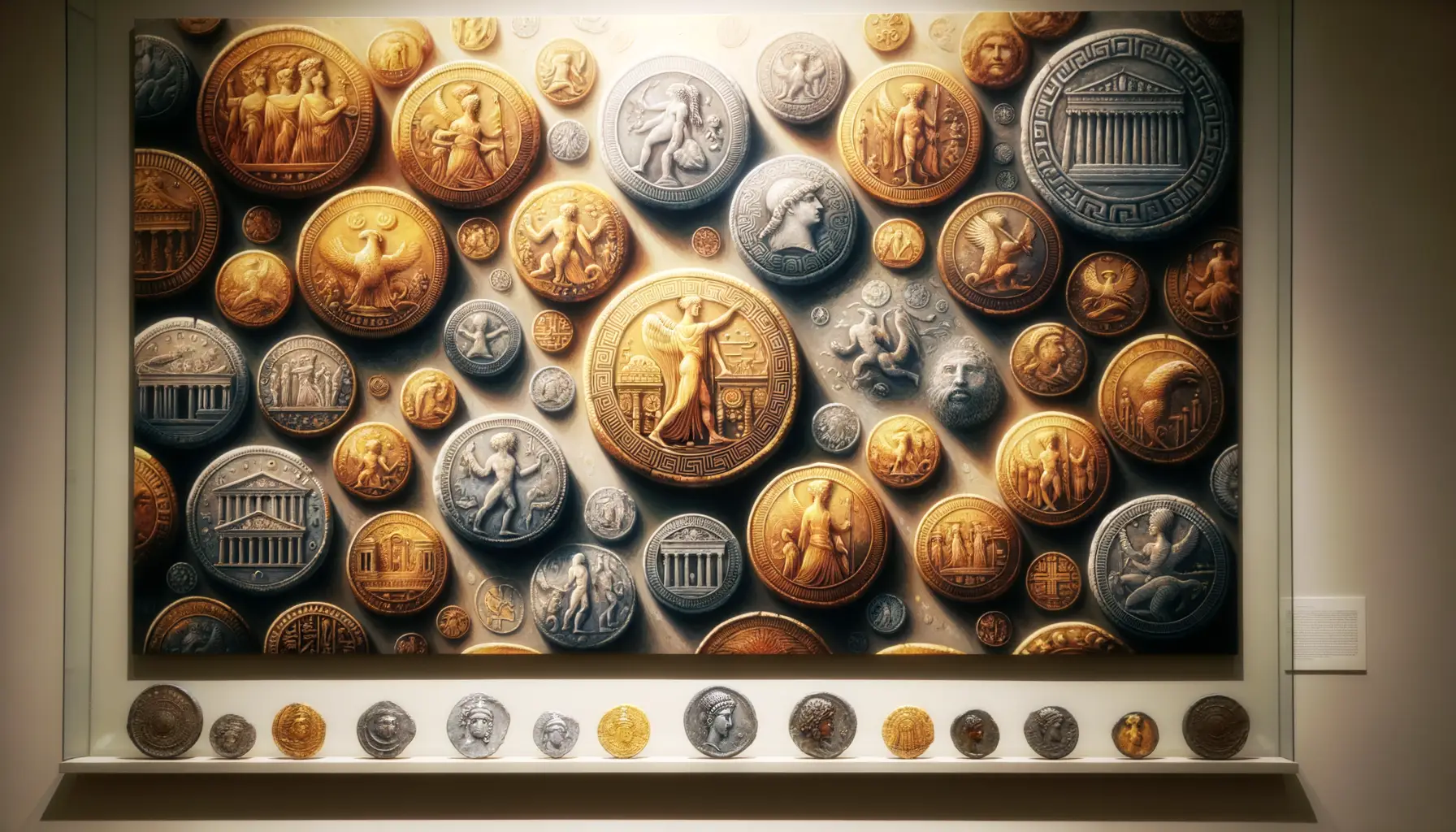
Emblems of Power, Faith, and Identity
Ancient coins weren’t just tools for trade—they were miniature storytellers. Each design carried a deep cultural and symbolic weight, reflecting the spirit of the civilization that minted it. Take, for instance, the image of the owl on the Athenian tetradrachm. The owl wasn’t chosen at random; it symbolized wisdom and was sacred to Athena, the city’s patron goddess. Carrying such a coin was like holding a piece of Athens’ very soul in your hand.
Coins also served as political megaphones. Roman emperors often adorned their own profiles on coins, surrounded by inscriptions declaring their titles and achievements. It wasn’t just vanity—these designs reinforced their authority and reminded every citizen who held them of the emperor’s might. It was propaganda you could fit in a pocket!
- Divine figures: Zeus, Isis, or Vishnu appeared as markers of divine protection and legitimacy.
- National symbols: Animals like lions or eagles often embodied strength and sovereignty.
- Historical events: Victories in war or grand festivals were etched into eternity for all to see.
These weren’t just coins; they were messages, faith, and pride pressed into metal—proof that even something as small as currency can carry a civilization’s heartbeat.
The Universal Language of Iconography
What’s truly breathtaking is how universal many of these images were. A sunburst symbol, for example, meant power and renewal, whether you lived in ancient Persia or Mesoamerica. Even today, modern currencies borrow this visual shorthand. Think of how the euro features iconic arches and windows—reminders of openness and connection, drawing from the same timeless playbook.
In a way, ancient coins acted as the first global language, transcending borders with their imagery. Practical, yes, but also deeply human.
Technological Innovations in Coinage Through History
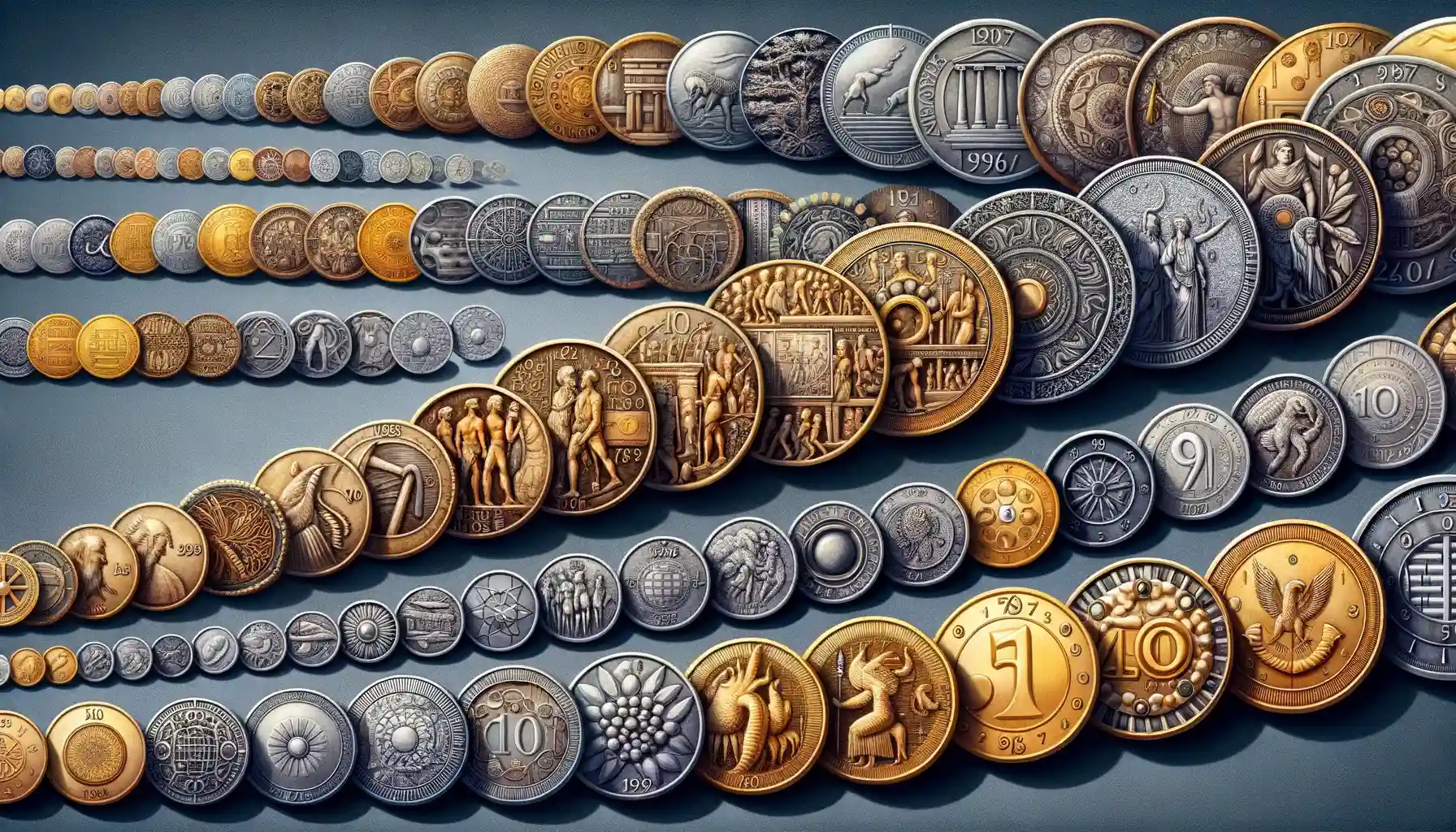
Revolutionary Moments That Changed Coin Production
Imagine holding a coin from ancient times—its texture, weight, and design. But beneath those intricate details lies centuries of innovation that transformed simple metal into powerful symbols of trade and identity. The journey wasn’t smooth; it was filled with eureka moments and daring experiments.
One groundbreaking development? The invention of the **coin press**. Early coins were hand-hammered—an artful yet painstaking process prone to irregularity. Enter the Greeks and Romans, who introduced screw presses, allowing coins to be struck with sharper detail. Suddenly, rulers looked clearer, inscriptions bolder, and the prestige of a coin soared.
Fast forward to the Middle Ages, and you’ll find water-powered machinery redefining efficiency. Coins became consistent in size and weight—a true game-changer for ensuring trust in their value. And then, in the 16th century, along came **milled edges**, an ingenious solution to prevent the illegal practice of shaving precious metals off coins. Brilliant, right?
The Sparkle of Innovation: Materials and Techniques
Metal mattered too. While ancient coins started with copper, silver, and gold, new alloys like **electrum** (a mix of gold and silver) emerged, blending beauty and durability. Even heat played a pivotal role. Ancient forges perfected melting points to ensure malleability. Ever heard of “clad coins”? It’s when metals are layered together—used first by the Romans and still seen today in modern pocket change.
Modern Economic Practices Rooted in Ancient Coinage
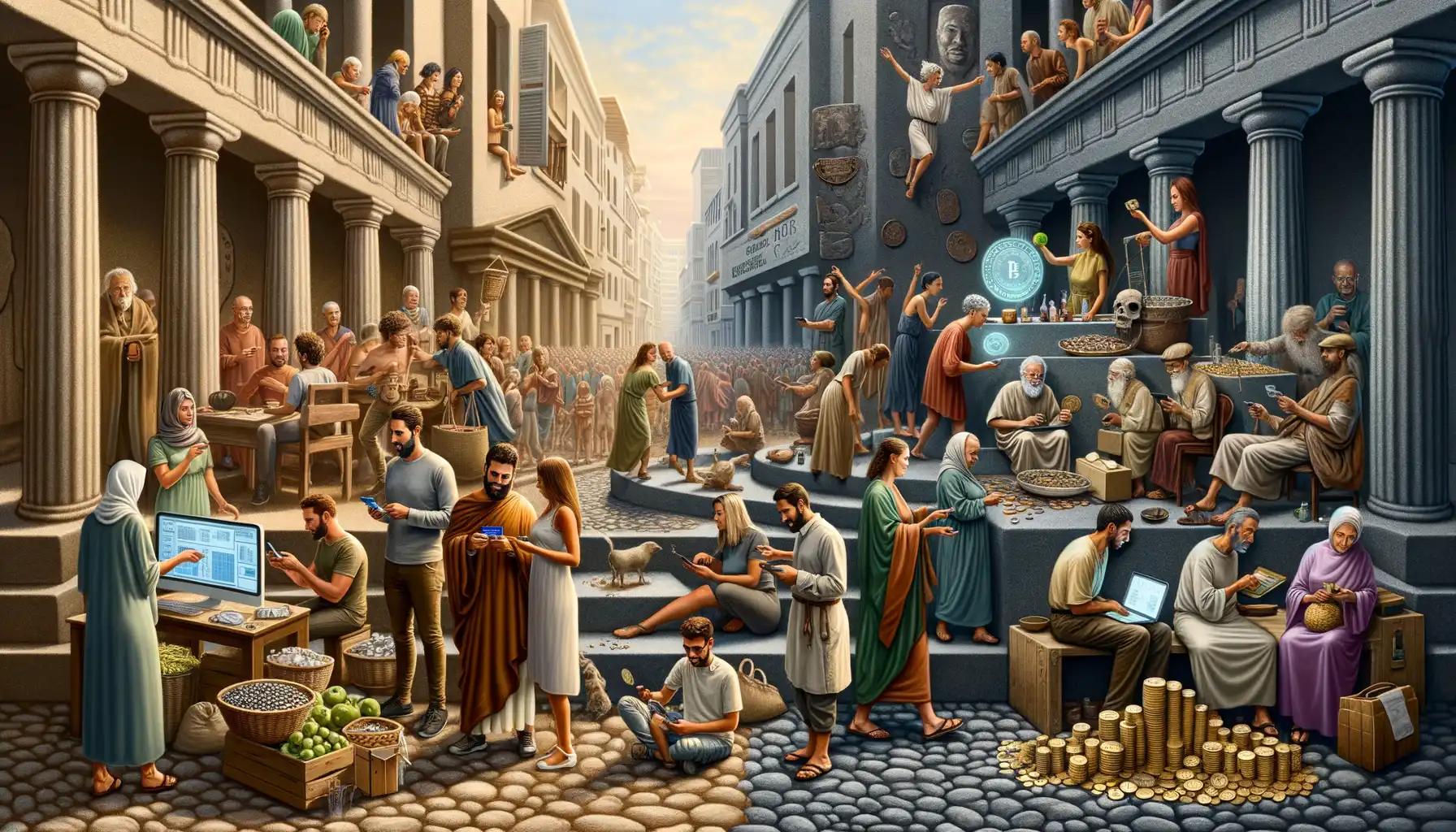
Timeless Lessons from Ancient Coins in Modern Economics
The shimmer of an ancient coin carries echoes of economic systems that were surprisingly ahead of their time. Today, we may tap to pay or trade stocks with a swipe, but many financial principles remain rooted in practices forged millennia ago. It’s as if those well-worn coins whispered lessons across the ages.
Take, for instance, the concept of a standardized value. The ancient Greeks and Romans struck coins of specific weights and metals, ensuring their worth was recognized far and wide. Fast-forward to today, and you’ll find this same principle echoing in global currencies like the U.S. dollar or the Euro, which serve as benchmarks in international trade.
- Trust-building: Metal coins were designed to reassure users of their authenticity—stamped with rulers’ faces and divine symbols. Think about modern currency’s elaborate designs or anti-counterfeiting measures!
- Portability: Coins enabled seamless commerce across sprawling empires. Similarly, today’s cashless payments aim for frictionless global trade.
Ancient coins also inspired trade regulations. Merchants from the past couldn’t cheat with uneven weights; equally, our contemporary systems rely on robust auditing standards. From a silver drachma to a Bitcoin, it’s a fascinating continuum of human ingenuity.

